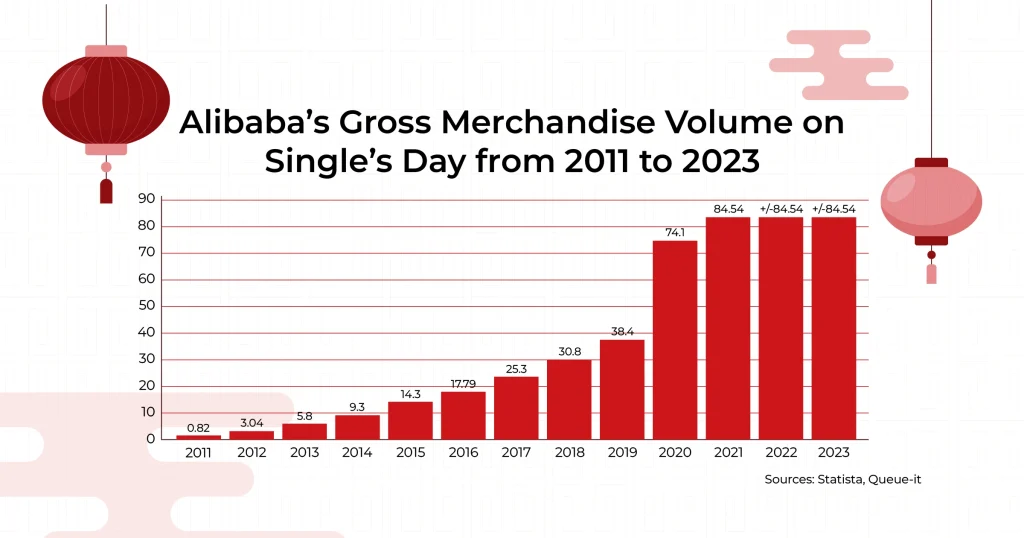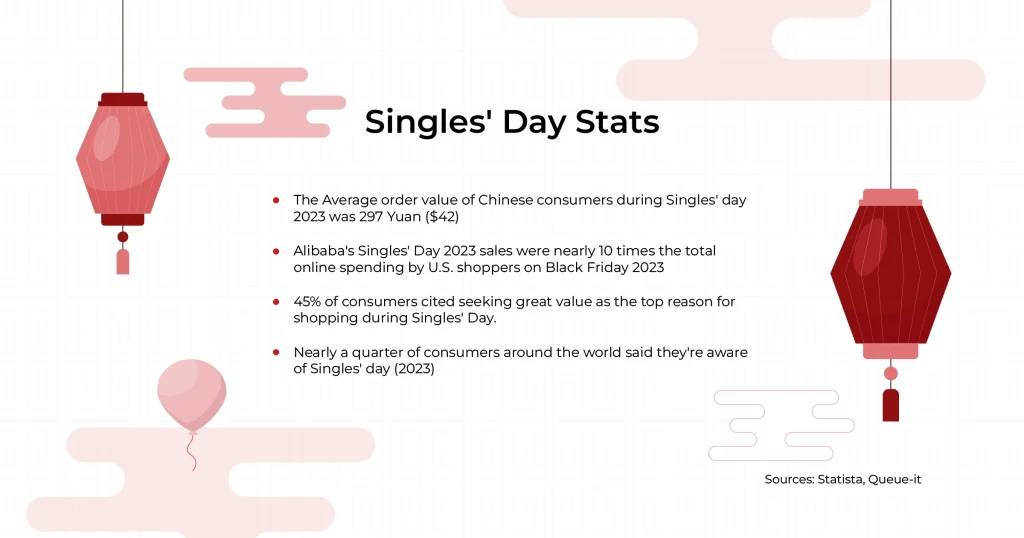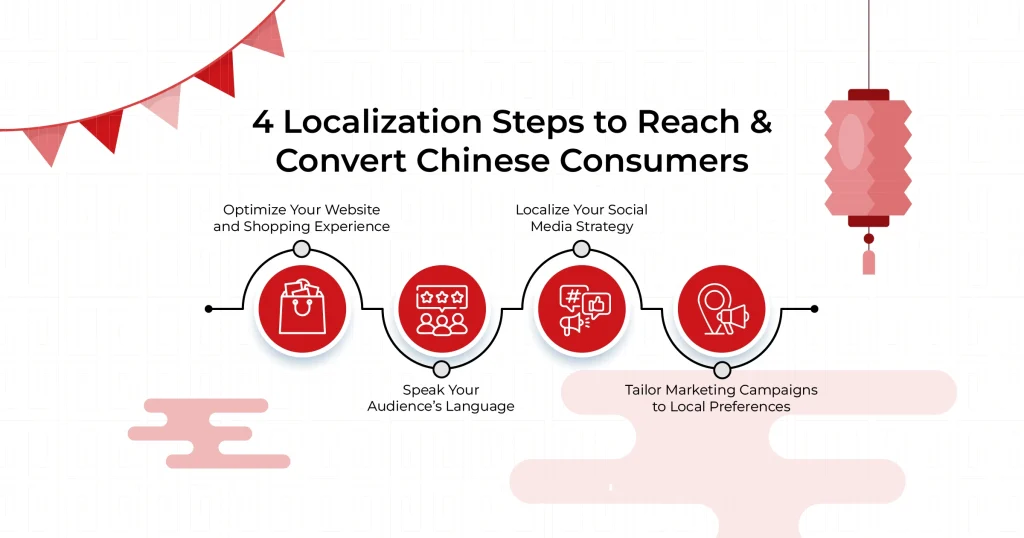China’s Singles’ Day is approaching! It is an unofficial Chinese holiday dedicated to all singles to proudly embrace their status and treat themselves to some well-deserved gifts.
It’s one of the largest online shopping days in the world, racking up more sales than Black Friday and Cyber Monday combined.
Curious about this shopping event and its potential to boost your eCommerce business?
We’ve gathered all the information you need to know about this day and how it can be a game-changer for your business. So, keep on reading!
What is China’s Singles’ day?
China’s Singles’ day (also known as Double 11 Shopping Festival) started as an anti-Valentine’s Day in 1993 at Nanjing University. Some students invented this event to give single people the attention they need, just like those in relationships. Why not pamper themselves with treats and new gifts?
They marked November 11th as the day they celebrated their singlehood and named it as the Bachelors’ Day. They chose this date since the number 11 resembles sticks, which refers to the term “bare stick,” which means a single man in Chinese culture.
Then, outside the university campus, the event went viral and evolved into Singles’ Day.
So, how did China’s Singles’ day evolve into such a big online shopping event?
It started in 2009, when China’s eCommerce giant, Alibaba Group, began offering substantial discounts on this day, transforming Singles’ Day into a shopping holiday. Alibaba’s innovative approach, including live streaming with big names like Taylor Swift, has secured its lead in Singles’ Day sales and created an exciting opportunity for eCommerce businesses.

Now, Singles’ Day is not just about celebrating being single; it’s a shopping occasion for savvy shoppers everywhere!
How China’s Singles’ day Grew Into an International Shopping Event
The efficiency and convenience of online shopping in Asia have only fueled Singles’ Day’s popularity and turned it into one of the biggest shopping events in the region. Traditional retail outlets couldn’t compete with the alluring deals found online, leading Chinese consumers to flock to eCommerce platforms.
In 2023, Chinese consumers spent an average of 297 yuan per order during Singles’ Day sales, leading to a total of $156.4 billion in sales.
As consumers continue to adapt to digital-first shopping experiences, the event is gaining momentum. Actually, 290,000 brands from over 90 countries and regions participated in Tmall’s Singles’ Day sales in 2022.

The Appeal of Single’s Day & Why Chinese Consumers Splurge
- Deep Discounts and Promotions
One of the biggest draws of China’s Singles’ Day is undoubtedly the fantastic discounts and enticing promotions that businesses roll out. Consumers eagerly anticipate this event, knowing they can snag incredible deals that might not be available at any other time of the year.
During Singles’ Day, many retailers offer discounts ranging from 30% to as much as 80% off on a wide range of products. This includes everything from fashion, cosmetics, and electronics to home goods and travel services. Flash sales, limited-time offers, and bundle deals create a sense of urgency, driving shoppers to make quick purchasing decisions.
- Cultural Significance
In China, gift-giving is rooted deeply in cultural values and traditions, symbolizing respect, connection, and gratitude. It’s an essential practice during various celebrations and special occasions, including holidays like the Chinese New Year and, increasingly, modern events like Singles’ Day.
- Mobile Commerce Dominance
Mobile commerce has skyrocketed in China, fundamentally reshaping the online shopping landscape. In 2018, Alibaba reported that almost 24% of the orders came through smartphones only in the first hour of the event.
To make it even better for mobile users, Alibaba uses features like live-streaming shopping, featuring celebrities and influencers to showcase products, demonstrate their use, and interact with viewers through live chats.
And for better engagement, they incorporate interactive games, including quizzes, spin-the-wheel promotions, and other gamified elements that reward users with discounts or exclusive deals.
How To Reach Chinese Consumers with Localization
Speak Your Audience’s Language
76% of consumers are more likely to buy a product or service if the information is in their native language. That’s why localization should take the front seat in your expansion approach, especially when entering China during such a huge event.
But localization is not merely about converting words from one language to another; it involves conveying the right sentiment and context.
For example, certain colors hold different meanings in Chinese culture—red symbolizes good luck, while white is often associated with mourning.
Not taking into account the Chinese cultural nuances when localizing your website and marketing materials would drive your customers away, which would jeopardize your whole reputation in the region.
Optimize Your Website and Shopping Experience
Did you know that 40% of customers won’t buy from websites in other languages? That’s a significant number to consider!
To effectively engage your Chinese audience, it’s crucial to present your website content, product descriptions, marketing materials, and customer support resources in Chinese.
This not only enhances user experience but also builds trust and encourages customer loyalty, ultimately driving sales and expanding your reach in the Chinese market
Tailor Marketing Campaigns to Local Preferences
Know your Chinese customers’ pain points and preferences and adapt your marketing campaigns accordingly. Incorporate current trends into them. The goal is to reach and engage them on a deeper level, encouraging them to relate to your brand and buy from you.
Chinese consumers often seek a sense of belonging. Campaigns that foster community and engagement—whether through online forums, social media discussions, or community events—can create a loyal customer base and build solid and lasting relationships.
Localize Your Social Media Strategy
When it comes to promoting your product in China, you have to invest in two platforms: WeChat and Weibo. WeChat serves as a multifunctional platform combining messaging, social media, and eCommerce, while Weibo functions more like Twitter, catering to real-time communication and trends.
Each has its own audience and characteristics. Therefore, get an expert who knows precisely what is best for your business.
In general, Chinese consumers appreciate brands that engage with them meaningfully. For example, by using the interactive features of WeChat and Weibo—like polls, live videos, and contests—you create opportunities for deeper relationships with potential customers.

Make Singles’ Day Your Gateway to China
Whether you’re looking to tap into the Chinese eCommerce market or strengthen your foothold, let us be your success partner through professional Chinese translation services. At AsiaLocalize, we help you build meaningful connections with your Chinese audience, enabling you to enter the market confidently.
With the help of our in-country Chinese experts, we transform your messaging to resonate with their needs linguistically and culturally.
Whether you need product descriptions, marketing materials, or website localization, we craft engaging content that captivates Chinese customers and keeps them loyal to your brand.
Let our translations be the bridge that connects you to success, leaving competitors in the dust!
| Enjoy a 5% discount on all our services for a limited time! Don’t Miss Out! |






